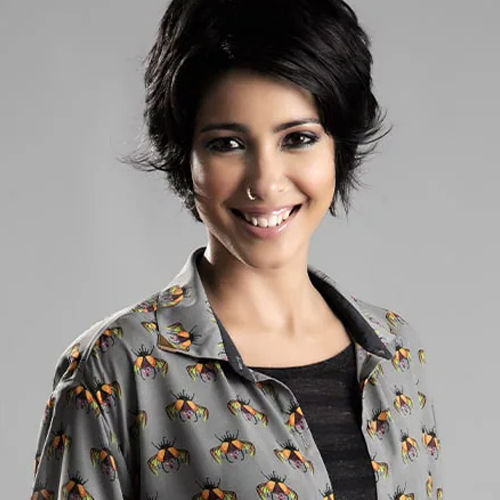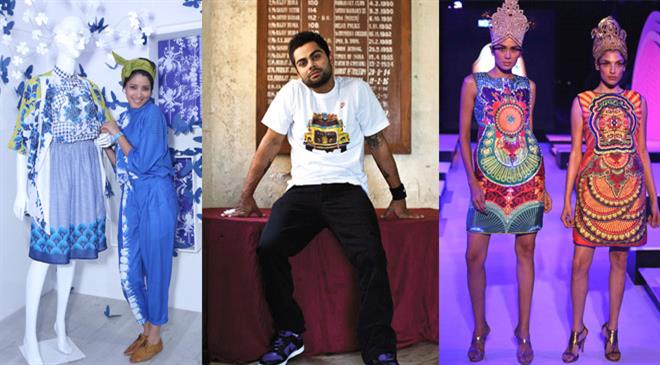
Nida Mahmood
Founder
Label - Nida Mahmood
My language is colour and mode of expression, print
The Nida Mahmood brand emerged from the designer’s innate love for all things Indian. The eponymous label believes in creating a world in Indian colours. It has a strong design language drenched in Indian influences and finds inspiration in weaving stories from colloquial anecdotes about people and places. Speaking to Fibre2Fashion, designer Nida Mahmood talks about her label, collaborations, fashion trends and future plans.
Fibre2Fashion: What motivated you to launch your eponymous label?
Nida Mahmood:
I always knew I would do something creative in my life. Although I was studying to be a doctor, I figured out very early that I was not as excited by the idea of wearing a white lab coat and stethoscope as I was drawn to colour and form. After realising that I needed to have my own voice and make a difference, the best way forward was to create my own label.
F2F: How would you describe the vibe and spirit of your collections?
NM:
My work is vibrant and rejoices in the nuances of our innate ‘Indianness’ which makes us who we are. We are never preachy in our design approach but have a lively, fun-loving edgy take. At the same time, our design sensibility reflects a social message. We are bold and fearless. We believe in creating our path with evolved creative thinking.
F2F: What sets you apart from other brands in the fashion industry?
NM:
We are a holistic brand which does so much more than just fashion. While fashion is definitely our focus and forte, it does not stop us from expressing in other ways in our creative spaces.
F2F: What inspires you to create such artistic and colourful prints?
NM:
I am inspired by everyday things which seem small and can be easily missed. These are the things that actually make us as people, but we do not realise how intrinsic they are because of their nature. I love the streets, nooks, and crannies of India. India is oozing with inspiration. The chai stalls, old cinema halls, small weekly bazaars, modern elements, fashionable cities like Delhi and Mumbai, smaller towns, urban cultural nuances, the amalgamation of languages—everything inspires me.
F2F: What are your thoughts on the luxury fashion landscape of India? How has it evolved over the years?
NM:
The luxury fashion market has expanded by leaps and bounds in the past decades. With the advent of social media, people have been exposed to so much that the audience has become aware and discerning about the quality and fit of garments.
F2F: Tell us about a few of your favourite projects and collaborations.
NM:
I have enjoyed all the creative projects we have done. Some of my favourites would include collaborations with Nike, V&A, Lady Gaga, Swarovski, Satya Paul, and Absolut. All these projects have enriched the growth of the brand and our expression of design.
F2F: What are some of the challenges you have faced as an Indian designer?
NM:
Initially, people in general did not take fashion very seriously and that was a big challenge as far as communication with people by and large was concerned. Fashion was considered ‘a hobby’ as opposed to a profession. It took a while to change that perception.
F2F: What are your future plans for the label? How are you planning to scale it?
NM:
We have several interesting plans both in terms of our creative approach as well as business-wise.
F2F: What do you envisage as the top five fashion trends for the year 2023?
NM:
One very big trend for 2023 will be the continuance of oversized jacket and men’s suits for women. We are not quite done with this trend, so investing in it will be worthwhile.
F2F: What advice would you like to give to young designers who are just starting out? How can they thrive in the highly competitive fashion industry?
NM:
The most important thing to remember is that originality is key. Creating your language as a designer is very important. This is a very competitive and saturated industry, hence copying or taking the beaten path often ends in a short trail.

Abhay Gupta
Fanny Vermandel
Anurag Batra
Pradip Mehta
Aseem Prakash
Arun Sirdeshmukh
Gabi Seligsohn
Rahul Mehta
Bill D’Arienzo
Rahul Mehta












_8.JPG)
